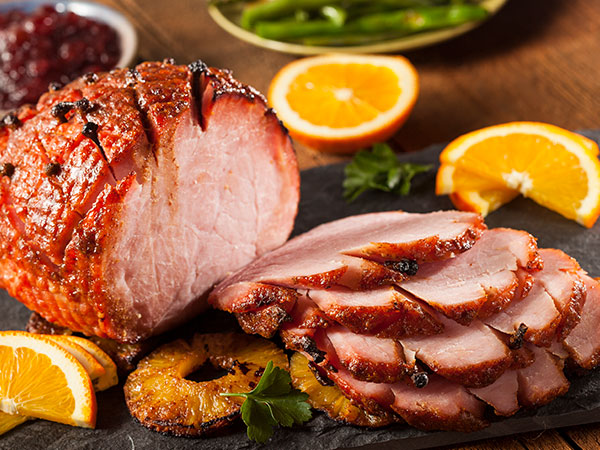Enjoying food with family and friends is one of the highlights of the holiday season and while everyone wants to join in to help, too many cooks in the kitchen can result in an increased risk of food poisoning. Foodborne illness can cause severe and even life-threatening illnesses. Easy-to-do, safe food handling practices help protect everyone in the family from getting sick.
Here are some food safety tips to avoid common kitchen blunders when preparing meals, buffets and even homemade food gifts this holiday season.Share the Gift of Home Food Safety This Season
Follow these simple steps to properly handle food and reduce the risk of food poisoning:
- Defrost carefully. Never allow foods to defrost at room temperature, on the counter or in warm water. Defrost food only in the refrigerator, in the microwave or in a cool water bath (inside a leak-proof plastic bag) with water that is changed every 30 minutes. When defrosting food in the refrigerator, remember to cover raw meat and place it on the bottom shelf so juices won't drip onto other foods. When defrosting food in the microwave, cook it immediately afterward.
- Wash hands before, during and after food preparation. Proper hand-washing may eliminate a large percentage of food poisoning cases. Remember to wash hands when switching tasks, such as handling raw meat and then cutting vegetables. Wash hands with soap in clean, running water for at least 20 seconds.
- Keep kitchen surfaces clean. Use hot, soapy water to wash countertops and surfaces, cutting boards, refrigerator door handles and utensils. After cleaning, keep it clean by avoiding cross-contamination.
- Use two cutting boards. Dedicate one for raw meat, poultry and fish and the other for ready-to-eat foods, such as fruits and vegetables. Make it easy to remember by using color-coded cutting boards, one for raw meats and one for ready-to-eat foods.
- Employ different utensils for different tasks. Use separate spoons and forks to taste, stir and serve food.
- Resist temptation. When baking, avoid eating foods containing raw eggs or uncooked flour, such as cookie dough or cake batter. These ingredients may contain bacteria that can lead to food poisoning if not cooked first.
- Buy and use a food thermometer. It is the only reliable way to determine the doneness of your food and ensure that food is cooked to proper internal temperatures. (Do not rely on "clear juices" to tell that the turkey is done.)
- Refrigerate food within two hours of serving. This helps to prevent the growth of harmful bacteria that can lead to food poisoning. This is especially important when serving buffets. Use a refrigerator thermometer and make sure it's set at below 40°F.
- Practice Kitchen Safety. Ensure your kitchen is ready with the tools and resources you need before the big event.
Are Your Guests at High Risk for Food Poisoning?
While you should always practice safe food handling, some guests might be particularly vulnerable to food poisoning, including older adults, pregnant women, young children and people with weakened immune systems. This may mean taking special precautions and keeping certain high-risk foods off the menu.
Whether you're bringing a holiday dish to the party or preparing the holiday feast yourself, it's important to practice safe food handling and keep in mind the needs of those who may be vulnerable to food poisoning.
Take special care during the holidays to ensure that vulnerable guests avoid high-risk foods, such as raw or under-cooked eggs, raw or unpasteurized dairy products, raw fish or shellfish, raw or rare meat and under-cooked poultry.
Joy to the Leftovers
Holiday meals often bring leftovers. Perishable food should not be left at room temperature for more than two hours. Refrigerate or freeze leftovers within two hours of serving or throw them out. In hot weather, when 90°F or above, refrigerate or toss within one hour of serving. Use an appliance thermometer to check that the refrigerator is cooling to 40°F or below and the freezer is 0°F or below.
Store leftovers in shallow containers. Remove turkey from the bone and store it separately from the stuffing and gravy. Slice breast meat into smaller portions to speed up cooling; legs and wings may be left whole. Use turkey, stuffing and gravy within 3 to 4 days. Reheat leftovers to 165°F.
When in doubt, throw it out!
Find a Nutrition Expert
Looking for credible nutrition information and recommendations? The Academy of Nutrition and Dietetics' network of credentialed food and nutrition practitioners are ready to help!
